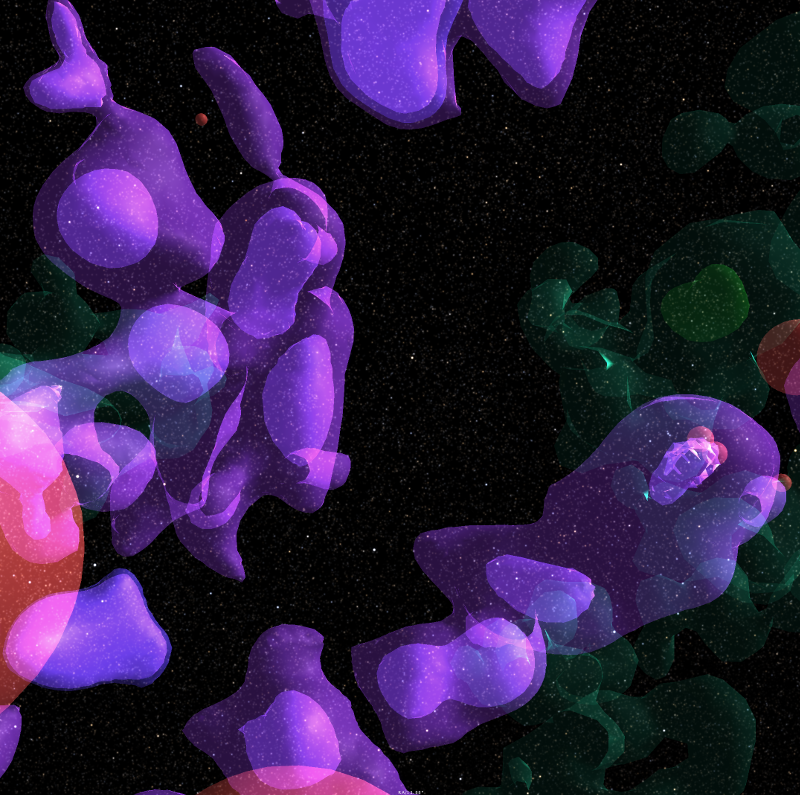Here are some resources for the galaxy map.
Software
Python scripts for creating and selecting the meshes:
https://github.com/kevinjardine/gaiadr2
Gaia Sky key frame animator:
https://github.com/kevinjardine/gaiasky_contrib
Meshes
All map meshes set up in Blender with lighting and materials:
http://gruze.org/galaxymap/resources/dr2_ob_release_blender.zip
Gaia Sky meshes:
https://zah.uni-heidelberg.de/institutes/ari/gaia/outreach/gaiasky/downloads/#isosurfaces
All but the two largest mesh sets (Non ionizing ranges ge25 lt50 and Non ionizing peaks ge25 lt50) are part of the normal Gaia Sky install.
Individual map meshes:
http://gruze.org/galaxymap/resources/map_meshes.zip
These are for use outside of Gaia Sky and are larger more detailed versions. As the hot star, dust and HII region meshes were created using different bin sizes and orientations, it probably makes sense to convert them to a standard coordinate system representing parsecs where the galactic centre (0 degrees) is to the right and the sun is at (0,0,0).
Here are the transformations:
hot star meshes: multiply mesh coordinates by 3, translate by (-3027,-2997,-597), rotate by -90 degrees
dust meshes: multiply mesh coordinates by 5, translate by (-2045,-1995,-300), rotate by -90 degrees
HII regions: no transformation should be necessary.
Mesh used for hot star 3D print:
http://gruze.org/galaxymap/resources/iso_5_percent_solid_scaled_fixed.obj.zip
Mesh used for all star 3D print:
http://gruze.org/galaxymap/resources/all_mesh_region_5-23_scaled.obj.zip
Poster
SVG source and background images:
http://gruze.org/galaxymap/resources/poster.zip

